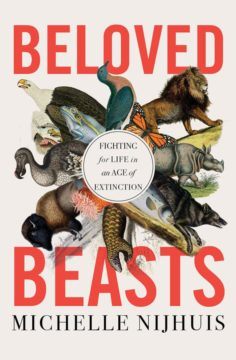Rachel Love Nuwer in Undark:
 Today’s conservationists are taxed with protecting the living embodiments of tens of millions of years of nature’s creation, and they face unprecedented challenges for doing so — from climate change and habitat destruction to pollution and unsustainable wildlife trade. Given that extinction is the price for failure, there’s little forgiveness for error. Success requires balancing not just the complexities of species and habitats, but also of people and politics. With an estimated 1 million species now threatened with extinction, conservationists need all the help they can get.
Today’s conservationists are taxed with protecting the living embodiments of tens of millions of years of nature’s creation, and they face unprecedented challenges for doing so — from climate change and habitat destruction to pollution and unsustainable wildlife trade. Given that extinction is the price for failure, there’s little forgiveness for error. Success requires balancing not just the complexities of species and habitats, but also of people and politics. With an estimated 1 million species now threatened with extinction, conservationists need all the help they can get.
Yet the past — a key repository of lessons hard learned through trial and error — is all too often forgotten or overlooked by conservation practitioners today. In “Beloved Beasts: Fighting for Life in an Age of Extinction,” journalist Michelle Nijhuis shows that history can help contextualize and guide modern conservation. Indeed, arguably it’s only in the last 200 years or so that a few scattered individuals began thinking seriously about the need to save species — and it’s only in the last 50 that conservation biology even emerged as a distinct field.
“Beloved Beasts” reads as a who’s who and greatest-moments survey of these developmental decades.
More here.
